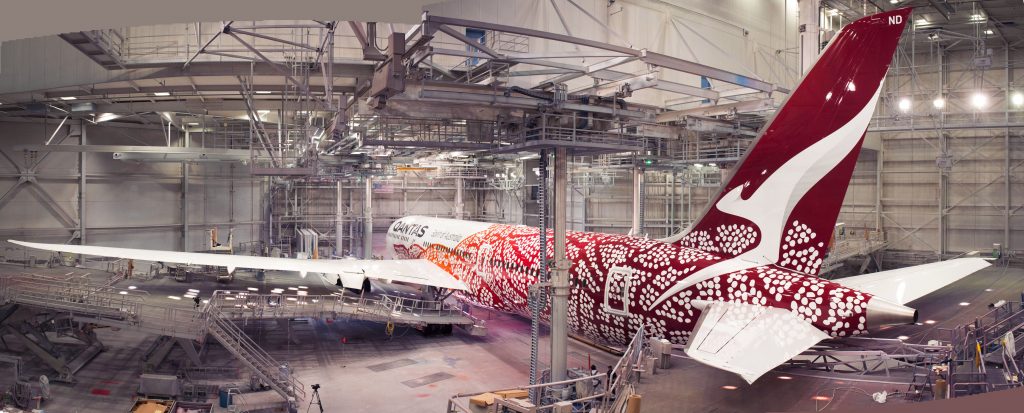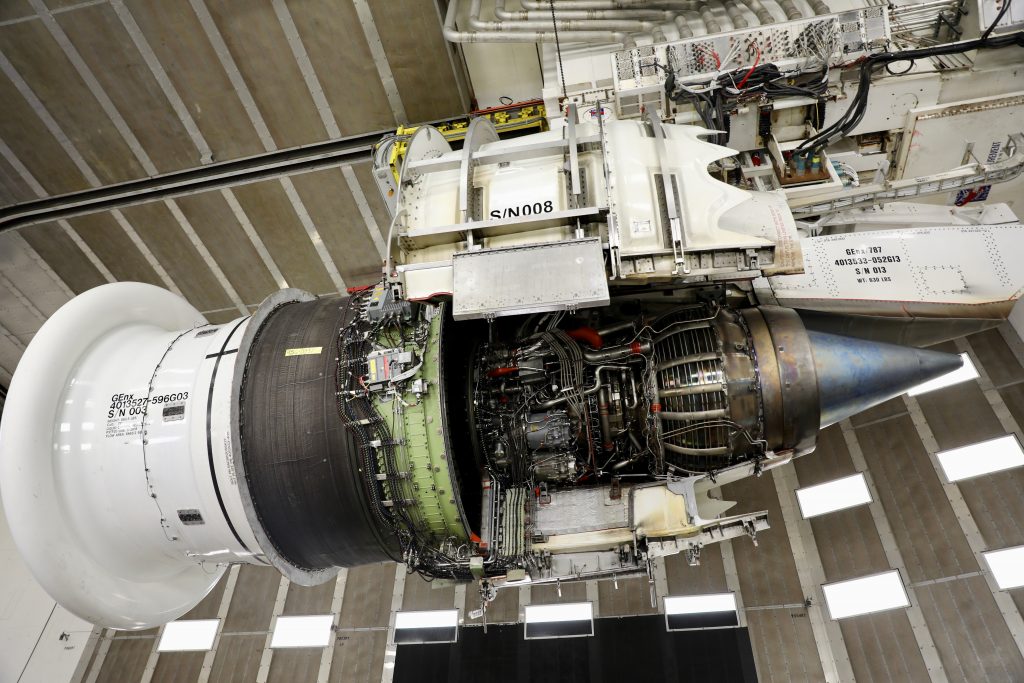The first flight on the new route between Perth, a port city in Western Australia, and London’s Heathrow Airport, took off on Saturday, March 24 and landed in London early Sunday morning. Numbered QF9, it is also the only direct flight between Australia and Europe. “This is the flight that Qantas has essentially waited most of its 98 years to take,” said Qantas Group CEO Alan Joyce.
The 236-seat Boeing 787-9 Dreamliner jet was powered by a pair of GEnx engines developed by GE Aviation. Qantas named it Emily after the indigenous Australian artist Emily Kame Kngwarreye. Its livery was inspired by her artwork.
The passengers, VIPs and journalists on board of the jet covered 14,498 kilometers — more than 9,000 miles — during the flight. The QF9 is the third-longest commercial route operated by any airline and longest scheduled trip flown by a Boeing 787-9 Dreamliner jet, beating the current record connecting San Francisco and Singapore by one hour.
Boeing designed large sections of the plane from light carbon fiber composites, the same material GE used to build the fan blades and the case for the jet engines. The design, computer systems, and engines together make the plane’s fuel consumption 20 percent lower compared to planes of similar size. That can save Qantas and its airline peers operating the jets up to $1.6 million per plane per year in fuel expenses, says Max York, CEO of GE Australia.
 Top and above: The Dreamliner flying the Perth-to-London route is named Emily after the indigenous Australian artist Emily Kame Kngwarreye. The plane's livery was inspired by her artwork. Images credit: Qantas.
Top and above: The Dreamliner flying the Perth-to-London route is named Emily after the indigenous Australian artist Emily Kame Kngwarreye. The plane's livery was inspired by her artwork. Images credit: Qantas.Planes flying the new daily Qantas route will start in San Francisco and fly to Sydney and Melbourne, before the marathon flight from Perth to London. From the British capital they will complete the same journey in reverse.
Qantas ordered the first GEnx engines for its Dreamliner fleet in 2007, and GE jet engines have powered the carrier's Boeing 767s since the late 1980s. Last year Qantas pilots also started using an app developed by GE and the carrier that “provides pilots with flight data in a very visual way, allowing them to see first-hand the amount of fuel used at different stages of a flight and how they can help to reduce carbon emissions,” according to Captain Mike Galvin, head of fleet operations at Qantas.
Qantas sees the flight as the next step in a long history. At the launch ceremony on March 24, Joyce recalled that Qantas co-founder Hudson Fysh in 1931 said, “By 2031 … one may be seated in a bullet-shaped vehicle awaiting departure on a trip to London, occupying a little over half a day.”
Said Joyce: “It seems we are 13 years ahead of schedule.”
 A GEnx engine at GE Aviation's jet engine testing facility in Peebles, Ohio. Image credit: Tomas Kellner for GE Reports.
A GEnx engine at GE Aviation's jet engine testing facility in Peebles, Ohio. Image credit: Tomas Kellner for GE Reports.




